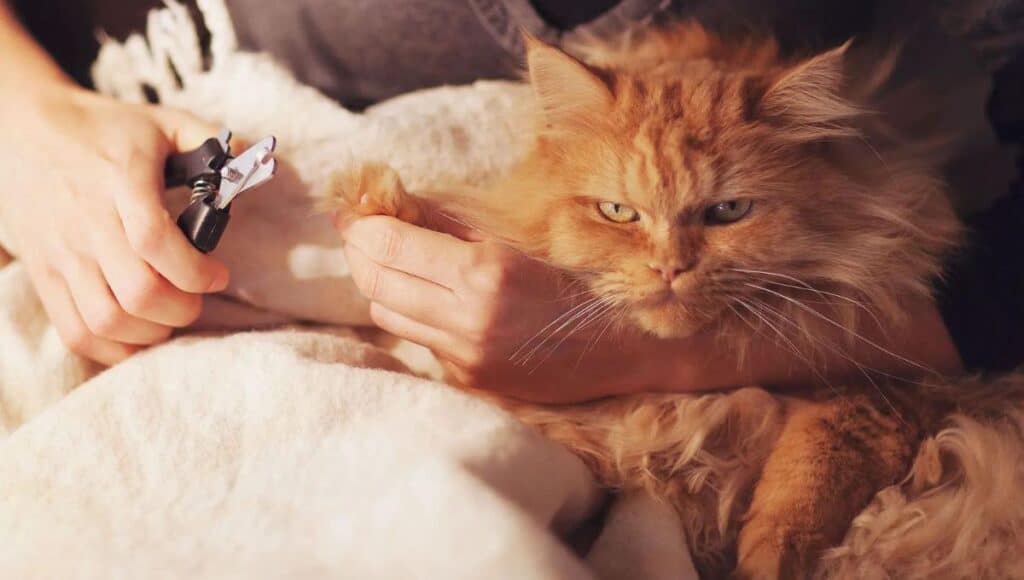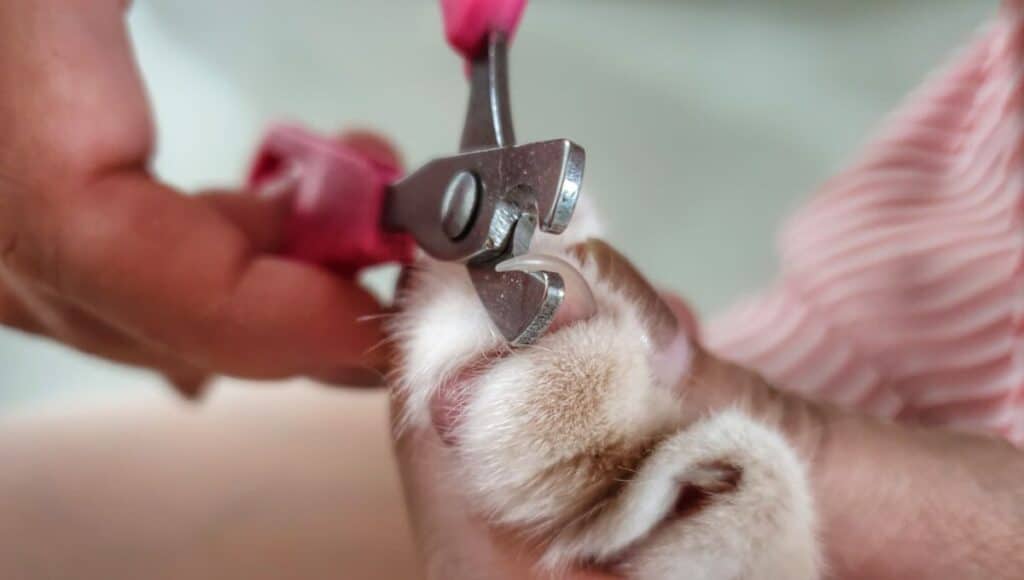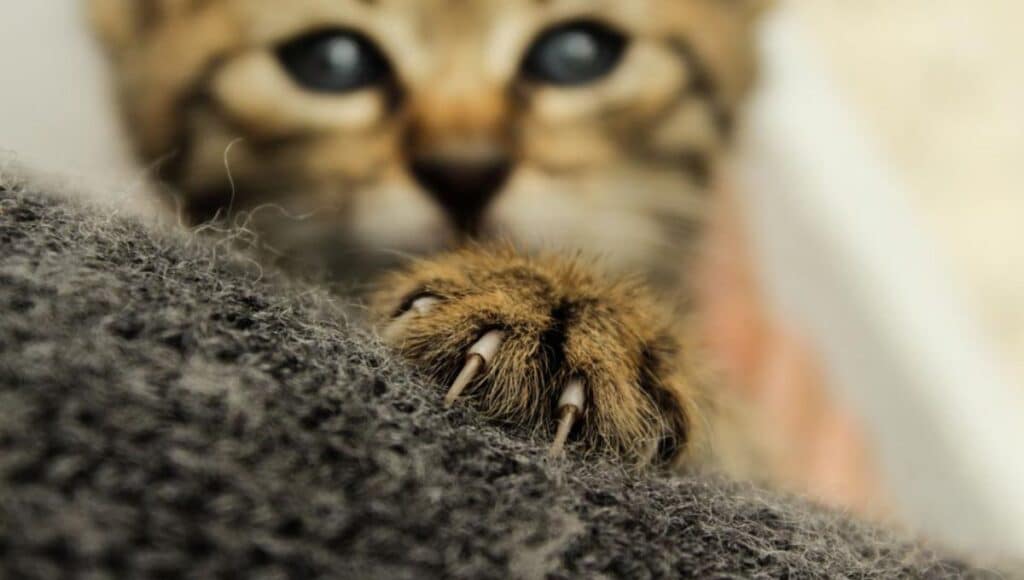Let’s start with the quick and simple answer – declawing a cat typically costs anywhere from $200 to $500. But hold up, we’re just getting started. The actual cost can vary quite a bit depending on several key factors.
Before we dive into the nitty-gritty details, let’s address the elephant in the room – the declaw procedure itself. It’s not as straightforward as you might think.
A Declaw Is A Declaw Right?
Sadly, no. There’s no regulatory body in the veterinary world ensuring all vets follow the same protocols for declawing. The costs can fluctuate based on the clinic’s approach, the vet’s experience, and the level of care they provide.
The cheapest option might seem tempting, but it could mean cutting corners on crucial aspects like proper anesthesia, pain management, and post-op care. On the flip side, the priciest vet doesn’t necessarily guarantee top-notch service either.
When you’re shopping around for declaw quotes, don’t be afraid to ask questions. A reputable clinic should be upfront about their process, including details on pain control, pre-anesthetic bloodwork, and monitoring during the procedure.
You Just Knock Them Out And Cut Off Their Claws Right?
Not quite. Declawing is a complicated surgical procedure that requires careful planning and execution. It’s not just a matter of snipping off those claws and calling it a day.
Your kitty will be put under general anesthesia, which is no small feat. An endotracheal tube (a fancy way of saying “breathing tube”) will be inserted to provide oxygen and the necessary anesthesia gases. Additionally, an IV catheter and fluids will be used to help maintain stable blood pressure and provide a route for administering any additional medications if needed.
The type of anesthetic agents used will be specifically tailored to your cat’s age, weight, health conditions, bloodwork results, and even breed. This customized approach helps ensure a safer, more controlled procedure and recovery.
Will My Cat Feel Pain?

Absolutely not, if the proper precautions are taken. This is a major surgery, after all – imagine having the tips of your fingers (including the bones) removed. Ouch!
To prevent your furry friend from experiencing excruciating pain, most vets will employ a multi-modal pain management strategy. This could include a long-acting pain patch like a fentanyl or buprenorphine patch, injectable pain medications during and after the procedure, and oral pain meds for the recovery period at home.
Some clinics may also use nerve blocks on the paws to provide additional localized pain relief during the declaw itself.
The key is open communication with your vet about their specific pain control protocol. Don’t settle for anything less than a comprehensive plan tailored to your cat’s needs.
Are There Other Options?
Absolutely! Declawing is becoming an increasingly controversial practice, with some states even outlawing it altogether. Many pet owners and veterinary professionals are exploring more humane alternatives.
The simplest solution? Provide your kitty with proper scratching posts and pads, and reinforce their use through positive reinforcement training. With a little patience and consistency, you can redirect their natural scratching behavior without resorting to declawing.
If the scratching persists despite your best efforts, you might consider temporary nail caps or regular professional nail trims. These options allow your cat to keep their claws while preventing damage to your home.
The Bottom Line: Do Your Research
Declawing is a complex and potentially costly procedure that should never be taken lightly. While the initial price tag might seem reasonable, the long-term implications (both financial and ethical) are significant.
If you do decide to go the declaw route, thoroughly research your options. Don’t just settle for the cheapest vet – invest in a clinic with experienced staff, up-to-date techniques, and a strong commitment to pain management and aftercare.
And remember, there are always alternatives to explore before making such a permanent decision for your feline friend.
At the end of the day, it’s about striking the right balance between your cat’s lifelong comfort and your own budget and lifestyle needs. With a little creativity and patience, you might just find the purr-fect solution for everyone.
Ask The Tough Questions
When it comes to something as significant as declawing your cat, you can’t afford to leave any stones unturned. A reputable vet should welcome your questions and provide thorough, transparent answers.
Here are some crucial queries to add to your list:
- What is your experience with declawing procedures? How many do you perform annually?
- Do you use up-to-date techniques like laser declaws or non-invasive tendonectomies?
- Will my cat receive pre-anesthetic bloodwork and be properly monitored throughout the procedure?
- What specific pain medications and protocols do you use for declaw surgeries?
- How do you handle post-op care and recovery instructions?
- Are there any potential long-term side effects or complications I should be aware of?
Don’t be afraid to shop around and compare responses from multiple clinics. This is a decision that will impact your cat’s well-being for years to come, so it’s worth taking the time to find the right fit.
The Declaw Dilemma: Exploring The Ethical Debate

While the practical considerations of declawing are important, we can’t ignore the ethical elephant in the room. This controversial procedure has sparked intense debates within the veterinary community and among pet owners.
On one side of the argument, proponents argue that declawing is a legitimate solution for protecting furniture and preventing potential injuries from scratching. They contend that, when done correctly by an experienced vet, the risks are minimal and outweighed by the benefits.
On the other hand, critics view declawing as an inhumane and unnecessary form of mutilation. They argue that it’s an archaic practice that causes unnecessary pain and stress, and deprives cats of their natural ability to scratch (which is an important part of their instinctive behavior).
Some animal welfare organizations have gone so far as to equate declawing with the amputation of a human’s fingers at the first knuckle – a harsh comparison, but one that drives home the severity of the procedure.
As more and more cities and states enact partial or total bans on declawing, the ethical debate continues to rage on. Ultimately, it’s a personal decision that each pet owner must weigh carefully, considering their own values, lifestyle, and their cat’s specific needs and temperament.
Keep Reading
The Purr-Fect Scratching Solution: Tips For Deterring Unwanted Scratching
Let’s be real – as much as we love our feline friends, their scratching habits can be a major source of frustration (and expensive furniture repairs). But before you resort to the drastic measure of declawing, it’s worth exploring some tried-and-true scratching deterrents and training techniques.
First things first, invest in high-quality scratching posts and pads. Look for sturdy, tall posts covered in sisal or rope (cats love to stretch and scratch vertically). Place them in high-traffic areas where your kitty likes to hang out, and consider using catnip or treats to encourage their use initially.
If your cat develops a habit of scratching specific pieces of furniture, try covering those areas with double-sided sticky tape or aluminum foil (cats generally dislike these textures).
Positive reinforcement training can also work wonders. Whenever you catch your cat scratching appropriately, reward them with treats, praise, or playtime. Consistency is key – it might take some time, but eventually, they’ll get the message.
And let’s not forget the power of regular nail trims. Keeping those claws trimmed (but not completely removed) can significantly reduce the damage caused by scratching.
With a little patience, creativity, and cat-friendly deterrents, you might just find the perfect scratching solution without resorting to declawing.
Conclusion
Declawing is a complex and potentially costly procedure that requires thorough research and careful consideration. While the initial cost may seem reasonable, the long-term implications, both financial and ethical, are significant.
Before making this permanent decision, explore humane alternatives like scratching posts, nail caps, and positive reinforcement training. If declawing is ultimately the chosen path, invest in an experienced vet with up-to-date techniques and a strong commitment to pain management and aftercare.
Strike a balance between your cat’s lifelong comfort and your lifestyle needs, but never compromise on their well-being. With patience and creativity, you can find the purr-fect solution for everyone.







